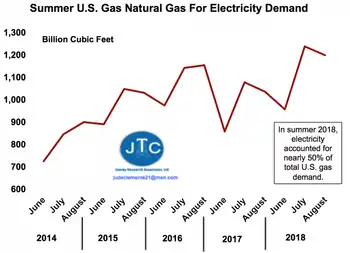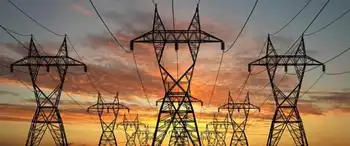Complex factors holding back new power plants
HOUSTON, TEXAS - It's time to plan new power plants in the United States, and in Texas, speed is more critical than some other areas of the country.
The number of new power plants planned for the United States in the next 10 years won't increase capacity enough to meet demand, experts at a Cambridge Energy Research Associates conference said recently. And in Texas, capacity will become uncomfortably tight by 2009, some experts predicted.
"If that's when we start building coal and nuclear, we will be in a world of hurt," said CERA power expert Daniel Mahoney.
In order to meet electricity demand with cheaper fuel sources, such as coal and nuclear, Texas and other states must begin planning the new plants now, Mahoney said, because building such generators takes many years. Otherwise, power generation companies will be left with only one quick-to-build option: natural gas, with its high and volatile price.
Trouble is, planning new power plants is difficult these days because it's unclear whether natural gas prices will drop. Further, talk among some lawmakers of new environmental rules could put coal plant investments at risk, and even though public perception of nuclear power seems to have improved, no one's tested that popularity by breaking ground on a new facility.
This adds up to caution among power plant investors at the very time the country needs them.
"I think people are going to keep that capital powder dry," said Bruce Williamson, chief executive of Dynegy Inc., which owns power generators across the country.
Even when electricity markets are stable, power plant investment is a risky business that depends on fuel price projections and the amount of time before there's a return on investment.
"The key drivers as we invest in these markets are fuel prices," said Alex Urquhart, chief executive of GE Energy Financial Services. "The decision whether to build a new coal plant is: What do you think will happen to gas prices?"
Coal is cheaper than natural gas, so a coal plant currently has a wider profit margin than a gas plant. That margin shrinks and swells with volatile natural gas prices.
Brandon Owens, an expert on North American Power with CERA, said natural gas prices won't likely drop below $4 per million British thermal units in coming decades. And other speakers said prices will likely remain above $6. Natural gas prices rose higher than $15 per Btu in December, but have backed off since.
But a drawback to coal, even if natural gas prices remain high, is the possibility the government will limit carbon dioxide emissions by coal plants. Several executives said they fully expect that to happen, but they're unsure when or how.
As for nuclear, the plants take so long to build that investors must wait years before seeing a return on capital. For that reason, James Rogers, chief executive of Cinergy Corp., said he doubts any nuclear plants will be built in deregulated electricity markets, such as Texas. Cinergy owns utilities in the Midwest.
Renewable energy plants, such as wind energy, are attractive, but they're not as reliable as other types of facilities, experts said.
"You have to be prepared for the wind to stop blowing and have back-up" to meet the immediate power demand, said Walter Higgins, chief executive of Sierra Pacific Resources, a utility company in Nevada.
One way to ensure a return on capital for investors in long-term projects is to sell power production ahead of time, said Joseph Kelliher, chairman of the Federal Energy Regulatory Commission.
Another suggestion he's heard recently is to create capacity markets. Rather than selling the finished electricity, a power plant could sell its capacity to a retail provider that wants to guarantee it can meet customer demand. That way, even if a power plant doesn't constantly run at full capacity, it brings in revenue for remaining on call for certain customers.
Related News

Ontario utilities team up to warn customers about ongoing scams
TORONTO - Five of Ontario's largest utilities have joined forces to raise awareness about ongoing sophisticated scams targeting utility customers.
Some common tactics fraudsters use to target Ontarians include impersonation of the local utility or its employees; sending threatening phone calls, texts and emails; or showing up in-person at a customer's home or business and requesting personal information or payment. The requests can include pressure for immediate payment, threats to disconnect service the same day, and demands to purchase prepaid debit cards, gift cards or bitcoin.
The utilities are encouraging all customers to protect themselves and are providing them with the following…




